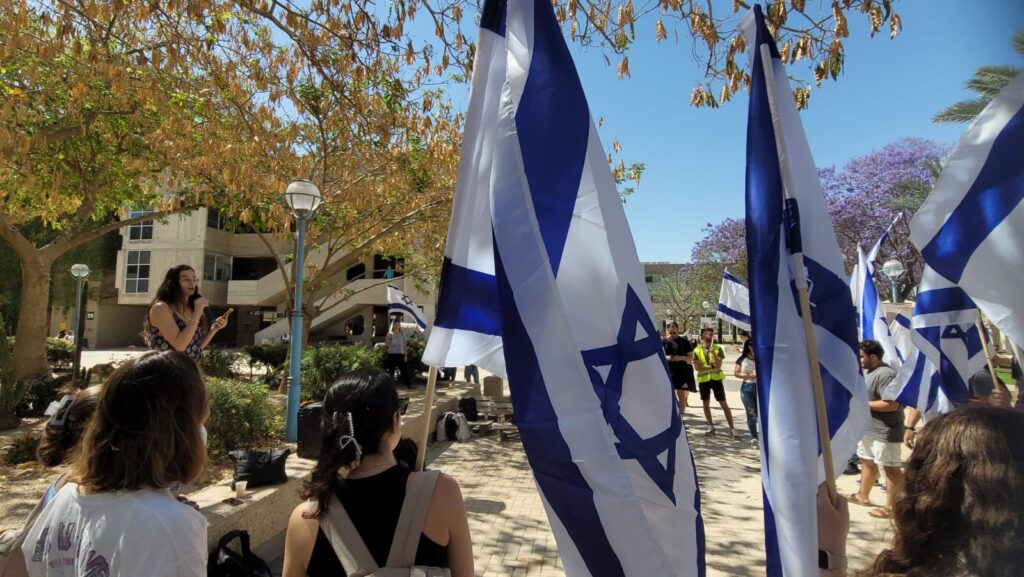Following the deep dive into classroom instruction in Part III, this final section explores the broader societal and political implications of ethnic studies, particularly when ideology informs instruction and scales up to influence public opinion and foreign policy.
By Charles A. Stone
In 2025, approximately 418,000 California high school students will graduate. Over the next four years, 1.6 million students will go to the polls to vote in local, state, and national elections. Over the next twenty years, nearly 8 million new voters will have graduated from California public high schools.
These numbers are not just statistics. They represent a political force shaped by what students are taught. If ethnic studies becomes a vehicle for presenting Israel as a settler colonial state grounded in apartheid and genocide, then millions of future voters may carry these views with them into civic life.
The classroom is a powerful space. Students trust their teachers. When they are taught that Zionism is inherently oppressive and that Israel is a pariah state, they internalize these ideas. This is not an accidental side effect; it is a strategic aim of some within the ethnic studies academic complex.
The Liberated Ethnic Studies movement understands the stakes. In their materials, in their public letters, and in their curricula, they articulate a clear ideological goal: to reshape the political consciousness of students. They seek to plant seeds of activism that will grow into electoral influence.
The institutions training future ethnic studies teachers, particularly in the UC and CSU systems, are often dominated by faculty who are committed antizionists. These future ethnic studies teachers will in turn, bring their biases against the Jewish State into their classrooms. Over the years, the effect will be cumulative and profound.
This ideological transformation in education doesn’t remain confined to the classroom. Over time, it shapes national discourse and international policy, especially in regions like the Middle East where U.S. alliances depend heavily on public and political support.
The consequences of this shift became increasingly evident, first on October 1, 2024, when Iran launched 200 ballistic missiles at Israel — intercepted with the joint efforts of Israel, the United States, France, Jordan, and the United Kingdom — and again with the outbreak of direct hostilities between Israel and Iran in June 2025. The strength of Israel’s alliances depends, in part, on public support.
Israel has also become acutely aware of the fragility of its relationship with the United States, when members of Congress have made an effort to deny Israel access to United States military aid while they are engaged in a war against Hamas, Hezbollah, Iran and the Houthis on multiple occasions.
If public opinion turns against Israel, likely influenced by years of biased education, the consequences for U.S. foreign policy and Israel’s security could be severe.
The extreme rise in antisemitic crimes cannot be viewed in isolation; there is and will be a connection to the lies teachers tell about the Jewish State. While many will say that being antizionist does not equate to being antisemitic, it is hard to square this circle when gunmen attack Jews and yell “Free Palestine,” or when mobs and thugs attack Jewish owned businesses screaming the same vociferous slogan. This is standard operating procedure of the activists who have been taught that Israel epitomizes every major evil of the world.
Parents and concerned citizens are pushing back. The risk is not just that students will be misinformed—it is that entire political generations will be built on a foundation of half-truths and ideological narratives.
The idea that Zionism is a unique global evil is reinforced in ethnic studies scholarship, such as the article “Chicanx-Palestine Solidarity” published in Ethnic Studies Pedagogies, where authors link Manifest Destiny and Zionism as parallel ideologies of displacement: “Palestinians were displaced from their homelands by Israel in the 1948 Nakba… driven by the pervasive ideologies of ‘Manifest Destiny’ for Chicanx and ‘Zionism’ for Palestinians.”
This is not the fringe. These ideas are making their way into classrooms, textbooks, and teacher training. They are rooted in what can only be described as a poisonous kernel of dishonesty—a distortion of Jewish history and national identity that seeks to equate the return of Jews to their ancestral homeland with European imperialism. They are essentially using the struggles of other peoples to make ostensibly anti-Jewish ideas palatable to the blindly empathetic younger masses.
This is why legislative safeguards like AB 1468 are vital. They ensure compliance with California’s anti-discrimination laws and attempt to prevent the classroom from becoming a site of indoctrination.
If we fail to draw a line between education and propaganda, we risk more than student disengagement. We risk altering the civic landscape in ways that are hard to reverse. Democracy thrives when the electorate is informed, not manipulated. Dishonest education will only result in an increasingly polarized electorate.
We should strive to educate the children of the United States with an honest and objective-oriented investigation and analysis of current events. In fact, this is the responsibility of public education.
Ethnic studies can empower. But only if it is honest, inclusive, accurate and accountable.
For more information on the Liberated Ethnic Studies Curriculum, explore the CAMERA Education Institute’s coverage of the topic.

